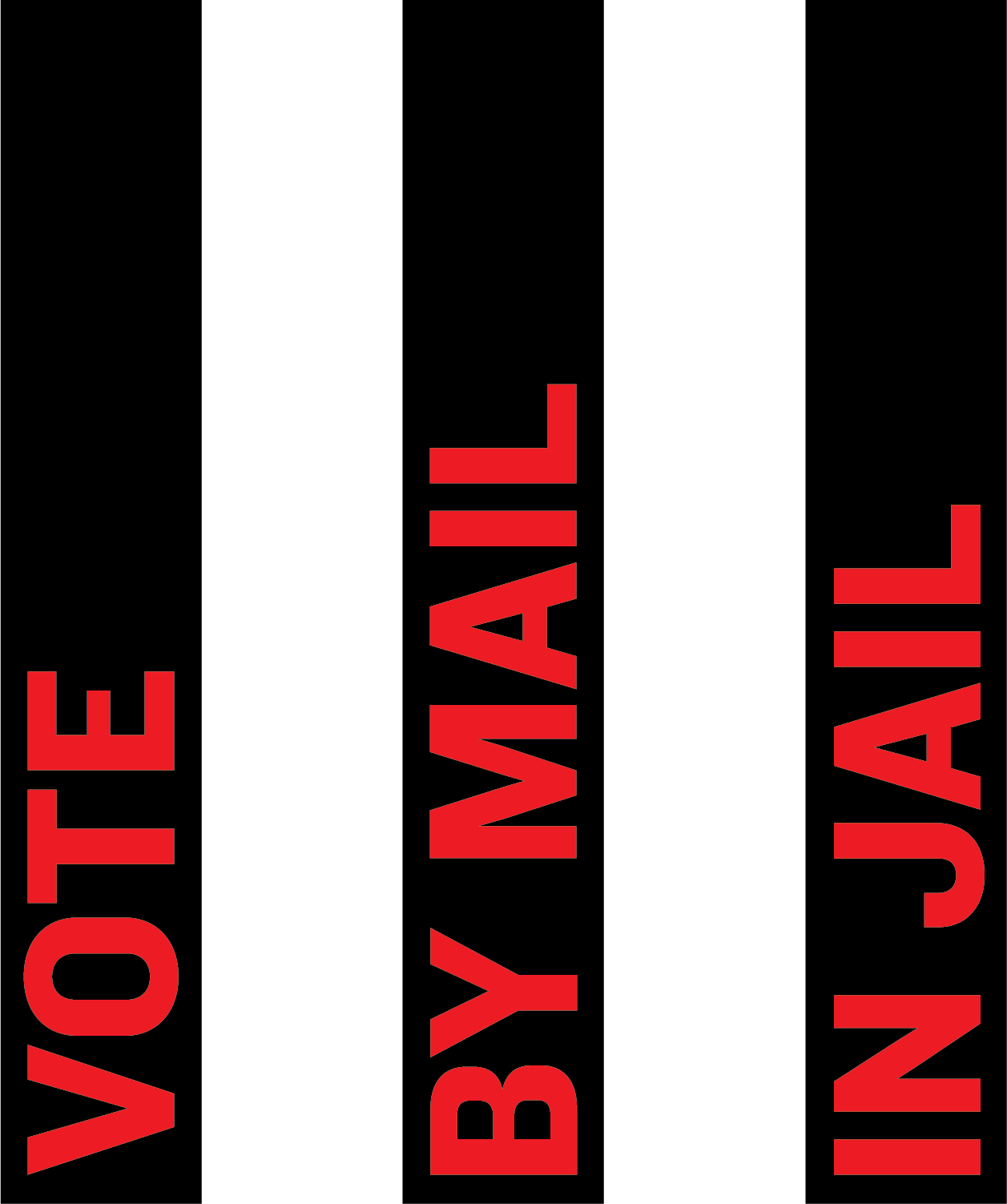As our democracy stands, the act of being incarcerated is completely disenfranchising. Not always because the law permits it, there are eligible imprisoned voters in every state: some with felonies in states like Maine, others with misdemeanors in states like Wisconsin and then there are those who are incarcerated pre-trial in every part of the country. With many eligible voters behind bars there are thousands of citizens at risk of being carved out of casting their ballots in the 2020 election.
The problem is there is no universal standard for how to facilitate inmate voting in the United States. These facilities were created to be disempowering, the process of voting doesn’t fit into the design of what the system is for, punishment. After calling dozens of jails across the country, prison officials’ response to, “Who’s in charge of inmate voting?” is always followed with confusion. The question of, “How does your jail facilitate voting for eligible detainees?” is often met with the common misunderstanding that, “Inmates can’t vote”. For prison officials not to embrace the rights of their detainees is one thing, but for staff to not be aware of what their inmate population’s rights are is baffling. Other facilities shift the burden of responsibility away from themselves saying, “families can forward their loved ones’ ballot to them if they want” or “we have another group that comes in to do that”. With the coronavirus eliminating outside volunteers from being able to work in prison programs indefinitely these attitudes will result in hundreds of thousands of ballots behind bars not being casted.
The Vote by Mail in Jail Program aims to resolve this issue by supporting eligible incarcerated citizens through the 2020 election at no cost to the inmate or the facility. Vote by Mail in Jail is a collaboration between the Right 2 Vote Campaign, Spread the Vote and Vote.org in order to protect the voting rights of eligible incarcerated voters by providing free resources for jails and detention centers that include registration paperwork, absentee ballot applications and nonpartisan newsletters with informative articles and deadlines reminders. The group has been recruiting facilities into the program throughout the summer, and will continue to do so throughout the month of Black August.. Through their participation prison officials can make sure that eligible incarcerated voters’ right to vote are being protected. Even with lowered capacity for programming and eliminated volunteer help, officials can at least make sure that the necessary information is available to eligible detainees at no cost to them. Program participation is simple, after an appropriate staff person from the jail (in house contact) connects with the VbMiJ team, they are invited to an hour long training presentation where they learn about the program timeline and which materials they will be receiving for the coming months. Following that presentation in house contacts are sent packets of the registration and absentee ballot applications in both Spanish and English to distribute or make available to eligible detainees. A series of newsletters are mailed to detainees directly throughout the period leading up to the election.
Yet again, community organizations are filling in where the state and federal officials have fallen short. Right now the Vote by Mail in Jail Program has the capacity to help hundreds of jails and there are still spots left. Jail staff who are interested in making this program available at their facility can get involved here. For those who are unsure, eligible voters include pretrial detainees in every state as well as citizens convicted of misdemeanors in many states, and those convicted of felonies in a select few. As a corrections worker it is your responsibility to ensure that detainees are as civically engaged as their rights permit them to be. Being civically engaged is a critical part of the rehabilitative process. For those who do not work in corrections, and especially for those who consider themselves reformists, call your local jail and ask them how do they facilitate inmate voting? Many don’t have an answer, but your call could help with getting them closer to it. For families with incarcerated loved ones that are eligible to vote, call the facility and ask what the protocol is for making sure they are registered and if they are already, ask then to which address can they have their absentee ballot forwarded. A select few jails have direct relationships with the local county clerk to help with facilitating inmate voting but more often than not there is no process in place. Vote by Mail in Jail is stepping into the roll to establish that process and we want to partner with as many facilities as possible throughout the month of Black August.

This election year more people than ever will be casting their ballot absentee, whether that be due to their incarceration or quarantine. Many have compared their quarantine to incarceration due to their inability to exit their living space for unessential activity or restrictions on seeing loved ones. The conditions of state mandated lockdown and self-quarantines are strikingly similar, from the amount of time a person is forced to spend without personal contact to the elimination of all outside programming, but we must not be mistaken the normalized violence that incarcerated citizens suffer daily is incomparable.
As the election approaches our empathy with people in prison should extend into preserving what’s left of our democracy. For those of us who are choosing to vote, many of us are doing so by mail and depending on your outlook we’re all in some form of oppressive captivity regardless of what side of the wall you’re on. Let’s make sure to hold jail and prison officials accountable to the eligible incarcerated voters in their facilities, the outcome of our election depends on it.


